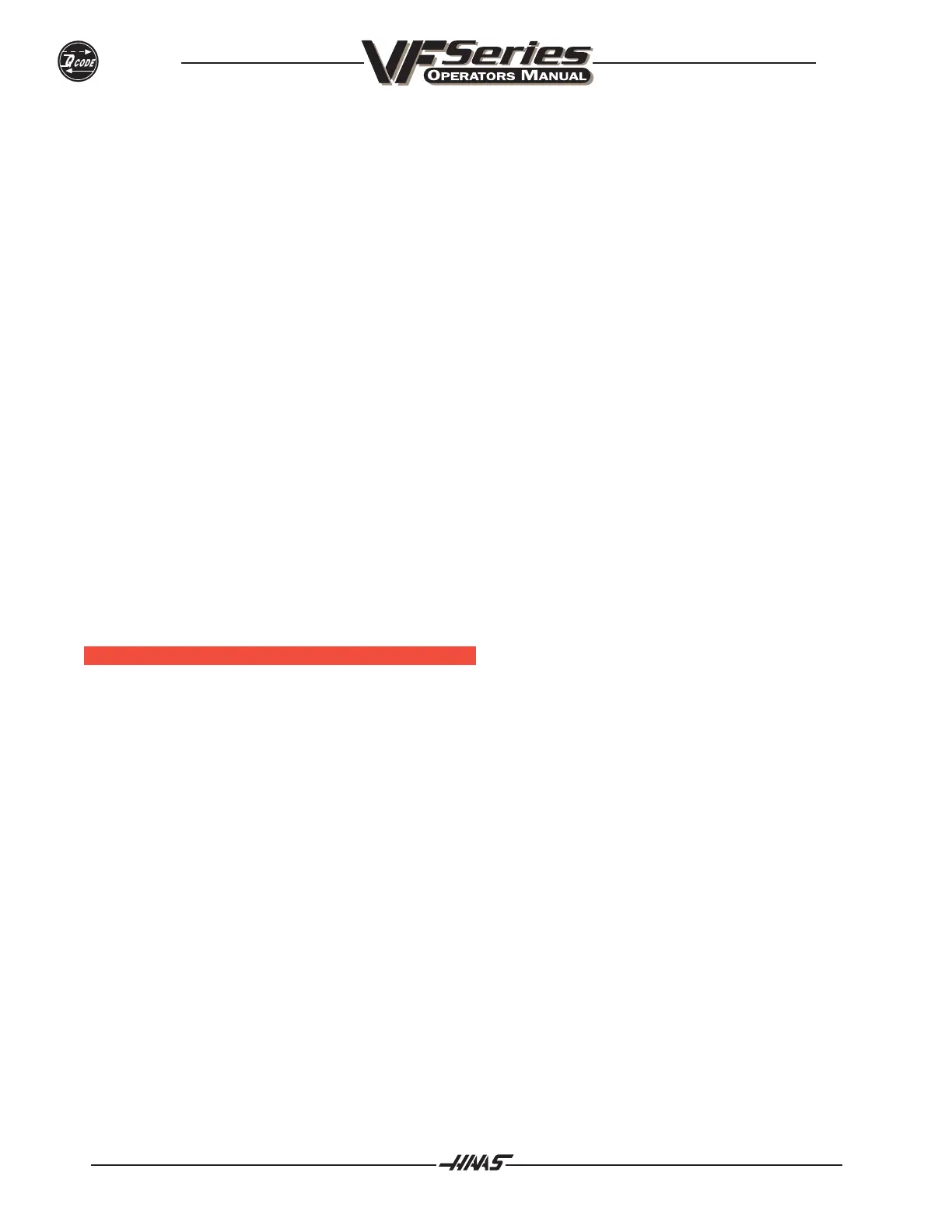96-8000
344
QUICK CODE
June 1999
- EXECUTE A CIRCULAR BOLT HOLE PATTERN
1.) JHCW and highlight the group titled BOLT HOLE PATTERNS.
2.) JHCCW one click. BOLT CIRCLE will be highlighted.
3.) Press the WRITE key.
At this point you may decide to move the table forward to remove the part. You can do this in your program
with the following.
- HOME THE Y AND Z AXES
1.) JHCW and highlight the group titled MISC. INSTRUCTIONS.
2.) JHCCW until HOME Y AND Z AXIS is highlighted.
3.) Press WRITE.
And finally, you can properly terminate your program with:
- PROGRAM RESTART
1.) JHCCW until END PROGRAM/RESET TO BEGINNING is highlighted.
2.) Press WRITE.
You now have a ready to run program. You should always verify everything in graphics to make certain that you
have not forgotten any steps. Although this looks like a lot of steps, it is actually very easy once you become
familiar with the QUICK CODE environment. The above program can be generated in less than a minute.
THE Q UICK C ODE S OURCE F ILE
All of the text seen in the group window, all of the code associated with items of groups, and much of the help
text observed in the help window is contained in a G code program. This program is called the QUICK CODE
source file. With this design, the user can modify QUICK CODE and tailor it to his specific needs. You can
add or change groups and items. The user can develop his own QUICK CODE file, or program, by editing this
file. Dealers can develop new applications and distribute them to their customers. The ability to edit the
source file makes QUICK CODE an extremely flexible tool.
SOURCE FILE PROGRAM DESIGNATION
Program number 9999 is the default QUICK CODE source file. Every HAAS control equipped with QUICK
CODE comes with a sample O9999 program installed. The default program number can be changed by
changing parameter 228. If the file number in parameter 228 is not found in the control, the message FILE NOT
FOUND is displayed and you will not be able to enter the QUICK CODE screen. The source file must be
formatted as defined below. If program O9999 is not formatted in the appropriate manner then you may not see
all, or any, of the defined QUICK CODE groups. You can use the following skeleton as a start for defining a
QUICK CODE source file.
